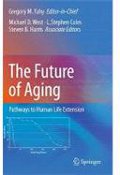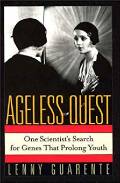David and Harriet Gershon Find Accumulation of Non-active Enzymes in Older Nematodes
 Who:David Gershon, Harriet Gershon
Who:David Gershon, Harriet GershonWhen:September 19, 1970
Methods: Using immunological techniques to detect catalytically altered or inactive enzyme molecules in the nematode Turbatrix aceti
Institution: Israel Institute of Technology
Where: Haifa, Israel
In the late 1960s David and Harriet Gershon noticed from previous research that nematodes experienced a decline in enzymatic expression with age. The question then was: Is this decline due to a reduction in the number of enzymes per cell, or in the accumulation of inactive molecules?
To answer this question they chose the nematode Turbatrix aceti since it has a short 25-30 day lifespan, and lacks regenerative capacity outside of the reproductive system. They then raised several populations of T. aceti and harvested them at different ages to assay for expression of the isocitrate lyase enzyme. The assay consisted of generating antibodies for the enzyme samples from the blood of rabbits, and measuring expression of the antibodies.
The results showed lower enzyme expression per unit of antigen for samples taken from older nematodes. This results suggest that while older nematodes have active enzymes, they also carry large amounts of damaged enzymes that are no longer functional.
The Gershons conclude stating that it would be interesting to understand the exact mechanism which causes the accumulation of inactive enzymes in the nematodes and if this phenomenon occurs in other organisms. They caution that investigations of enzyme activity due to age must go beyond measuring specific activities, as it appears old cells synthesize a larger number of molecules than younger cells. They also theorize that this extra energy expenditure creates a burden which leads to senescence.
References
- H. Gershon, D. Gershon, Detection of Inactive Enzyme Molecules in Ageing Organisms. Nature 227, 1214-1217 (1970)




